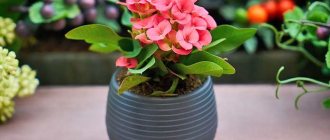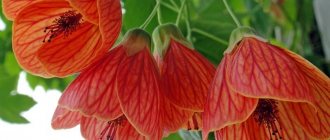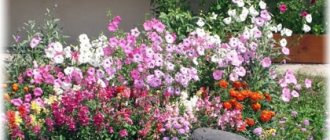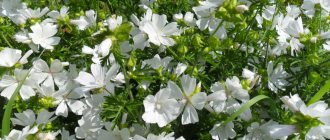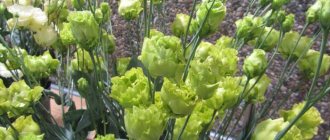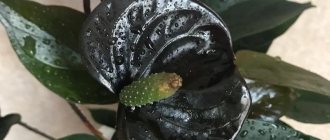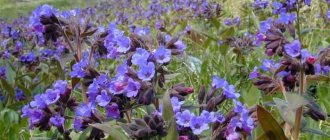The bulbous plant family represents a special group of herbaceous flower fruits that have a dense, shortened and multi-layered shoot - a bulb (corm). This name was assigned to them due to the similarity with the appearance and type of onion root.
Bulbous flowers are widespread both in the wild and in home cultivation. For seeds of this species, the climate of hot countries is most suitable for natural growth: South America, Central and Southern Africa, Southeast Asia.
Bulbous plants are divided into four large families, each of which has several varieties: Amaryllis, Liliaceae, Asparagus, Iris.
The most popular houseplants of the bulbous group
Bulbous flowers are grown for cutting to create flower baskets, bouquets and spring arrangements. Many of them grow quite successfully indoors.
Hippeastrum
It is often (and incorrectly) called amaryllis. Its homeland is South America. Mostly hybrids with flowers much more beautiful than those of the original species grow in the rooms. The leaves of the hybrid hippeastrum are long, linear, the bulb is large, funnel-shaped flowers sit in 2-6 pieces on the crown of a tall and thick peduncle. Depending on the variety, they can be from pale pink to dark red, sometimes variegated, with streaks and specks. Large bulbs form two arrows.
The plant is light-loving, it needs to be given sunny places; it grows well in rooms on windows facing south, southeast, southwest. For hippeastrum to bloom, a period of deep dormancy is required. By adjusting its timing and duration, you can have flowering plants all year round.
During the rest period, I put the pot with hippeastrum in a dark place, water it rarely and little by little, just so that the soil does not dry out.
Its flowers, like those of other bulbous plants, open at different times. But there are several of them on the arrow, and therefore, in general, flowering lasts 2-3 weeks. The pot you need is not very large (the distance from the edge of the bulb to the edge of the pot should be 1.5-3 cm). In a container that is too spacious, the plant will become fatty and may not bloom for a long time.
Krinum
R
also from South America. Its leaves are long, linear, bright green. The large bulb is covered with thin light gray protective films. Fragrant white and pink flowers are collected in 6-10 pieces. Krinum usually blooms in spring or summer. Large bulbs sometimes have 2 flowers open at the same time.
Krinum needs a bright, sunny place, and the pot for it should be large. I replant old plants once every 2-3 years, and one third of the bulb should be visible from the ground.
Eucharis
Eucharis , or Amazon lily, is a very beautiful bulbous plant with beautiful white fragrant flowers. Its leaves are wide, dark, shiny, on long petioles.
Amaryllis belladonna
Amaryllis belladonna is a beauty with bright pink, lily-like blooms. This plant is native to South Africa.
Amaryllis bulbs are planted in April. In May, after the bulb awakens, leaves appear on the plant, which die off in June. After two months, flower stalks and buds form on the stem, which bloom in late summer.
In warm and temperate climates, Amaryllis belladonna can overwinter in mulched soil. If your area has harsh winters, the bulb should be dug up after the above-ground part of the plant dies and stored indoors at a temperature of 13°C.
| Bloom | Aug. Sept |
| Plant height | 60-90 cm |
| Planting depth | about 10 cm (the neck of the bulb should protrude slightly from the ground) |
| Distance between bulbs | 20 cm |
| Underground part | bulb |
| Light requirements | |
| Purpose | |
Bulbous: planting and care
Now let's talk in detail about how to care for flowering bulbous plants. They need to be watered extremely carefully, because dampness can cause the bulb to rot. It is best to use rain, river or melt water for irrigation. The pot must be chosen in such a way that it contains soil without roots, and drainage must be poured into the bottom. Spring planting of bulbous flowers should be done as follows: large plants should be planted one at a time, crocuses - six to seven, and daffodils and tulips - three. Pots with planted plants are placed in a bright and cool place. Fertilize by watering during the period of active growth or flowering.
If the leaves of the plant are dry, it means that a dormant period has begun. Then it is necessary to clean the onion from the soil, dry it and, after a month, separate the “babies” that are stored in the sand. In the fall they are planted again, and after three to four years the “babies” will take on the beauty and strength of an adult plant.
Krinum
Crinum is a late flowering bulbous plant native to South Africa. Crinum inflorescences are most often dark pink or white.
This plant is quite heat-loving, so it is most often grown in pots, covered or brought indoors during frosts. When grown in the ground, it is planted separately from its “relatives” - crinum loves privacy.
The most popular varieties are Powella (pink) and Powella Alba (white).
| Bloom | Aug. Sept |
| Plant height | 60-120 cm |
| Planting depth | 15-20 cm (the neck of the bulb should remain above the ground) |
| Distance between bulbs | 45 cm |
| Underground part | bulb |
| Light requirements | |
| Purpose | |
Diseases of bulbous plants - possible problems
| Symptoms | Causes | Remedy |
| The plant does not produce leaves or does not bloom | The bulb died as a result of a fungal disease. The affected bulbs become soft to the touch and light. Spring bulbs usually rot after thawing. | Discard the onion and wash the pot thoroughly. Plant bulbous plants in a clean substrate without impurities. |
| The plant has put out leaves, but does not bloom | improper storage, especially at high temperatures, leads to the death of the flowering parts of the bulbs, although the tissues responsible for leaf growth are preserved. Small, weak bulbs may not have enough cells to flower. The presence of rich foliage and sparse flowers may be the result of the use of nitrogen fertilizer | try to buy fresh onions that have not been left on the shelves. Choose large specimens. |
| Leaves appear at the edges of the pot | the bulb or tuber was planted with the top down. | the tops of the bulb or tuber usually have a pointed shape. If you can't tell where the top of the bulb is, it's best to plant it sideways in the ground. |
| Leaves grow slowly, buds fall off without opening | dry air, sudden change in conditions. | increase watering and humidity. Do not move plants during bud stage. |
| The leaves are succulent and grow well, but unopened buds are dropped | too abrupt a transition from cold to warm conditions | Having taken spring-flowering bulbs out of a cold place, send them for 1 week to a cool, but not warm, room. The transition from cold to warm conditions should be gradual. |
| Plants grow large and unstable | too warm conditions at an early stage of growth or lack of light. | place the bulbs close to each other - this will help slow down their growth; place in a cooler room. Do not place in a warm place until the buds begin to open. Light-loving plants are drawn to bright light. |
| Unhealthy leaves, with small yellowish spots | spider mite | Remove affected plants as the mite may spread to other plants |
Hymenocallis
This Peruvian native goes by many names: Hymenocallis, Summer/Sea/Peruvian Narcissus, Lily of the Nile, Spider Lily. Such an abundance of names is awarded to a fragrant flower with white-yellow flowers of a bizarre shape on a long stem without leaves.
Hymenocallis loves sunny areas protected from the wind. When grown in containers, one plant requires a pot with a diameter of 13 cm. This flower also looks great in bouquets.
The most popular varieties of Hymenocallis have white flowers : Advance, Festalis Zwanenburg, Harrisiana. A decent variety with creamy yellow flowers is Salfur Queen.
| Bloom | June July |
| Plant height | 30-60 cm |
| Planting depth | about 10 cm (the bulb should protrude from the ground) |
| Distance between bulbs | 20 cm |
| Underground part | bulb |
| Light requirements | |
| Purpose | |
Planting and care features for bulbous plants
When planting bulbous plants, the choice of pot is very important. It is best to choose a container made of lightly fired clay with thin porous walls that are not glazed on the inside; by the way, you can make a clay pot with your own hands at home without special equipment. The size of the container is selected based on the size of the onion. The pot is selected correctly when there is 1.5 cm of free space on each side from its walls to the plant. Bulbous plants do not like waterlogging, so there must be a hole to drain the water. The diameter of the pot should be equal to its height. For planting, use a regular substrate for flowering plants, not forgetting to provide drainage: place a layer of expanded clay or broken brick on the bottom of the pot. In addition, in order to provide the plant with a good outflow of moisture and at the same time facilitate the flow of air to the roots, the pots with plants can be slightly raised above the surface of the windowsill. Bulbous flowers develop well in a bright but not hot room. The optimal temperature during the growing season is 20-25 degrees. They prefer moderate watering, they like melt or rain water, but ordinary tap water, pre-settled for 24 hours, is also suitable. Water temperature is room temperature. Bulbous plants respond well to feeding with liquid fertilizers containing nitrogen, potassium and phosphorus. They should be fed only during the flowering and growth period, once every two weeks.
A feature of the successful cultivation of this type of plant is to provide it with a period of rest. The rested bulbs will begin to form leaves with renewed vigor, and the plants will bloom regularly and profusely. Each species has its own wintering conditions, but, in general, it all comes down to stopping fertilizing, reducing watering and storing the bulbs in the substrate at a temperature of at least 10 degrees
Galtonia whitish
Another name for this South African plant is whitish hyacinth. This is a tall snow-white flower that will fill the garden with a delicate aroma. One to two dozen bell-shaped inflorescences are formed on one plant.
Galtonia is perfect for flower beds, mixborders or container plantings.
Galtonia does not really like transplanting and blooms well in one place for 4 seasons.
| Bloom | July-September |
| Plant height | 90-120 cm |
| Planting depth | 15 cm (to the height of the bulb) |
| Distance between bulbs | 20 cm |
| Underground part | pseudobulb |
| Light requirements | |
| Purpose | |
Vallota
The plant also belongs to the amaryllis family, native to southern Africa. Vallota has narrow elongated leaves characteristic of the species - more than half a meter long and only one centimeter wide. A distinctive feature of wallot is the dark red base of the leaves (see photo).
The flowers often have red petals, but sometimes pink and white specimens are also found. The peduncle is low, one has several lush buds at once. The bulb produces multiple children, so there are no problems with plant propagation. The leaves of the plant do not fall off, allowing the plant to remain attractive all year round.
Nerine
Nerine was brought to Europe from South Africa, although one of its names, the Guernsey lily, was given in honor of the British island in the English Channel. Another name for this flower is Lucoris radiata.
This bulbous plant loves sunny, wind-free areas and can be grown in containers or border plantings. Perfect for bouquets.
The color of nerina petals can be varied: white, yellow, orange, red, pink.
The two most popular types of nerine are Bowden and Sarnia . Both of them bloom in September-October, but the leaves of Nerine Bowden plants have already dried out by this time, while the foliage of Nerine Sarnia begins to grow only after the end of flowering.
| Bloom | September October |
| Plant height | 35-90 cm |
| Planting depth | about 15 cm (the neck of the bulb should remain above the ground) |
| Distance between bulbs | 20 cm |
| Underground part | bulb |
| Light requirements | |
| Purpose | |
Ledeburia
This plant is able to remain decorative all year round, which is its great advantage. The flowers appear in March-April and are beautiful funnel-shaped bells of a greenish hue.
The plant prefers bright places, so it is better to place it on a southern windowsill. If there is not enough light, the foliage of ledeburia will fade. Air humidity does not matter in this case. The substrate needs to be nutritious and loose; a mixture of leaf soil and humus is considered optimal.
Care is simple: watering is moderate, fertilizing is required. The plant especially needs potassium, which ensures good growth and long flowering. In summer, you can take the pot out into the garden, but ledeburia will not survive low temperatures - not lower than +7 degrees.
Ranunculus
Ranunculus is called the Persian (or Asian) buttercup. This is a favorite flower of florists who use it in a variety of compositions, especially peony and double varieties.
This charming plant blooms all summer. It can be grown in flower beds or as a border in well-lit areas.
Before planting, ranunculus corms are soaked in water for an hour, and after planting, the soil is watered well.
| Bloom | June August |
| Plant height | 30-60 cm |
| Planting depth | 2-5 cm |
| Distance between bulbs | 8 cm |
| Underground part | corms with corms |
| Light requirements | |
| Purpose | |
Levcocorina
Levkokorina comes from Chile, but its name is Greek - translated as “white mace”. Although its inflorescences are not only white, but also purple. Leucocorina resembles freesia in many ways.
In warm climates, this bulbous plant is grown in flower beds and in group plantings; in cold climates, it is often grown in containers. Levcocorina is also great for bouquets.
Of the 12 known species of Leucocorina, 7 are the most common: Ixioid, Coquimbensis, Macropetala, Purpurea, Alliacia, Angustipetala, Appendiculata.
| Bloom | Aug. Sept |
| Plant height | 50 cm |
| Planting depth | 3-4 cm |
| Distance between bulbs | 1.5-2 cm (10 bulbs per pot with a diameter of 15 cm) |
| Underground part | small bulbs |
| Light requirements | |
| Purpose | |
Clivia
The plant comes from southern Africa, where, in fact, almost all known ornamental bulbs originated. Clivia is a perennial that grows up to 60 cm in height. If the care is good, clivia can live for several decades, delighting with its flowering every year (see photo).
The leaves of the plant are beautiful, glossy, have a leathery texture, and form a false tube. The flowers are luxurious, orange-red in color, the tips of the petals are pointed, forming an umbrella shape.
It is better to grow clivia on a well-lit windowsill under conditions of constant external temperature and careful care. The plant usually reproduces by seeds, since children rarely appear on the mother's bulbs at home.
Useful video
A short report on bulbous indoor plants and perennials:
Of all the perennial plants, bulbous plants occupy a special place, since most of them are capable of forming flowers in the first year after planting, without any outside help.
The quality of the soil, applied fertilizing, and sometimes artificial watering practically do not play a role in this case. This phenomenon can be explained very simply - all the substances necessary for this are already contained in the onion. Here are photos and names of the most popular garden and indoor bulbous plants.
Lily
Lily is one of the most ancient flowers known in Europe and Asia. For several millennia it has delighted flower growers with its appearance and delicate aroma.
Lilies look beautiful in single plantings, but they are most impressive when planted in groups against the backdrop of dark green shrubs or in a mixborder along with dark blue and purple flowers. Considering that in nature these plants often grow in the mountains, they are suitable for growing in a rocky garden, at the foot of a rock garden. If desired, lilies can also be grown in containers.
If a lily does well in your flower garden, it can grow in one place for many years.
The most popular varieties of lilies belong to the group of Asian hybrids : Alaska (white), Compass (orange), London (yellow), Tuscany (pink), Gran Paradiso (red), etc. From the group of Oriental hybrids, the following varieties are often grown: Acapulco (hot pink), Casa Blanca (white), Mona Lisa (pink), etc. There are also various varieties of North American hybrids, Tubular, Curly, Long-flowered lilies , which are less common in our country.
| Bloom | June August |
| Plant height | 70-100 cm |
| Planting depth | 15 cm |
| Distance between bulbs | 30 cm |
| Underground part | bulb |
| Light requirements | |
| Purpose | |
Sauromatum
Sauromatum is a very unusual plant that came to us from the tropical part of Africa. It blooms with yellow-orange flowers with purple specks.
This bulbous exotic is grown in containers or individual pots. It is best to place sauromatum on verandas, balconies, and patios away from direct sunlight. This bulbous plant prefers soft, indirect light.
Sauromatum, like any tropical plant, loves moist, well-drained soil flavored with organic matter.
| Bloom | end of May – June |
| Plant height | 45 cm |
| Planting depth | 15-20 cm |
| Distance between bulbs | 8 cm |
| Underground part | large tuber |
| Light requirements | |
| Purpose | |
Hippeastrum
The plant has a large, rounded bulb, reaching a diameter of 11 cm. As you understand, the flower itself grows to an impressive size, its bud is also quite large. From one to six flowers appear on one powerful peduncle.
The flowers have a funnel shape characteristic of many bulbous plants with a rather narrow tube base (see photo). The petals at the edges are slightly bent outward, which makes the plant more decorative. Hippeastrum blooms in winter or spring, very rarely in summer, never in autumn.
